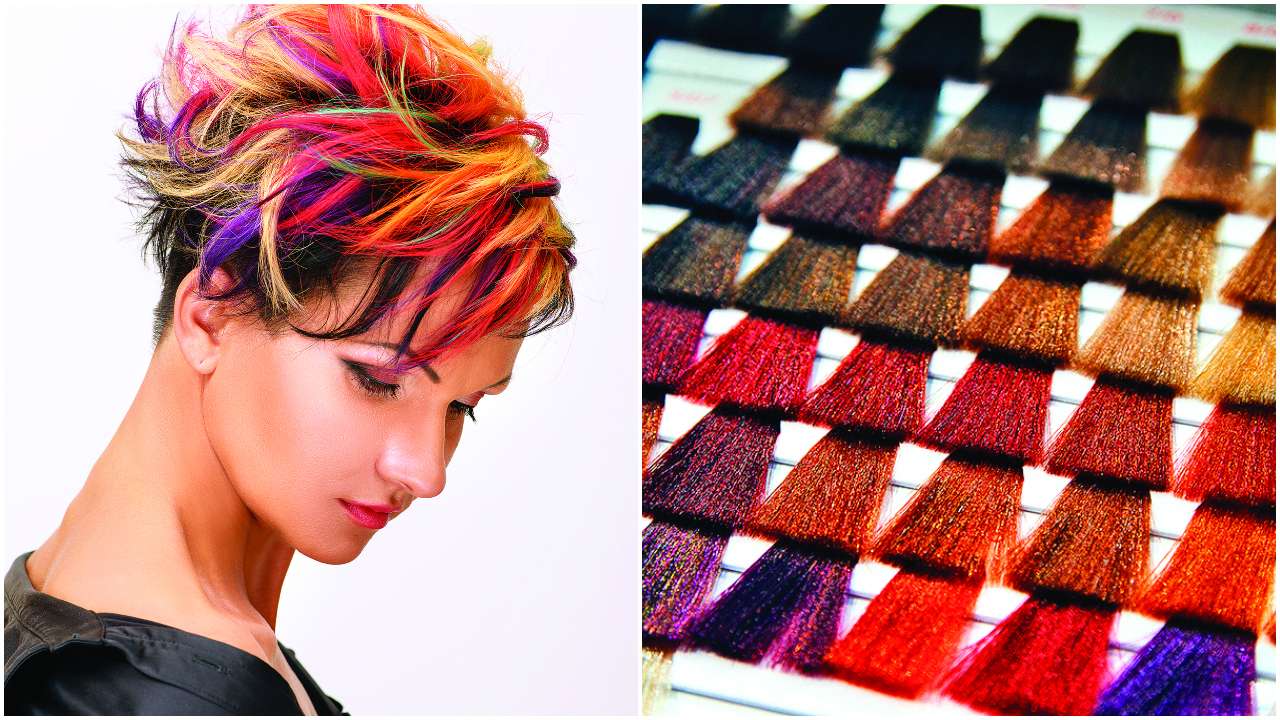
Behind all those fabulous hair colouring styles with French names – ombre and balayage – and techniques – highlights or global – is a cold, harsh truth. Hair colour is born from a dance of chemicals. That explains why the bleached, coloured parts of your mane turn coarse if your after-care regime is off. Moreover, multiple studies have associated hair dyes with cancer; and fashion hair colour in all it's avatars – temporary to permanent – is not far behind. To get to the root of this hair care argument, we ask experts what they think.
Adhuna Bhabani, founder and creative director of BBlunt chain of hair salons and products, explains with respect to her range of at-home-applicant hair colour called Salon Secrets Creme Shine. "The fact that my product is ammonia-free and contains silk proteins for extra shine speaks volumes about our integrity to hair colour," she says. However, the products don't list the chemicals on its packaging. Bhabani also hints at colour changing the quality of the hair saying, "A first-timer used to silky, soft hair, might not like how colour makes their hair feel." Her stylists prefer prevention to cure. "Each client has to take the 48-hour skin test before the colour service to check for any adverse reaction."
While newbies to a Wella hair colouring product are tested likewise, Nitin Manchanda, capability manager at the haircare giant, says, "Ammonia is one of the best things to happen to hair colour." Though Wella has ammonia and ammonia-free lines, Manchanda's grouse with the latter is that it doesn't create strong or vibrant colours, like its ammonia counterpart. "Ammonia opens hair cuticles easily, allowing colour penetration. Since it is gaseous, it evaporates within 45 minutes of application. It's a myth that ammonia-free products are safer – the substitute used stays on hair. Just as some people are allergic to seafood, others are allergic to ammonia," reasons Manchanda. "But if the hairdresser doesn't do a good concentration (mix the colour right) it can have adverse effects."
Hairdresser Aditi Salvi of Mira Road-based Enhance hair salon has similar opinions to Nitin Manchanda and also believes that the application technique and home care play a vital role in maintaining the hair strength. "Anything higher than 20 volume of the developer is not recommended on the roots. Though 30-40 volume onwards lightens the tone, it can burn your scalp and is best suited for the ends."
Medical practitioners, however, are wary of the chemical makeup after receiving patients with brightly coloured hair and noticeable allergies. "Hairstylists say that because ammonia leaves no residue after application, it's not harmful. But it is responsible for severe allergic reactions," says Dr Satish Bhatia, dermatologist and skin surgeon. "For instance, if my allergic tendencies are inclined towards severe atopic eczema, applying ammonia in high concentrations will instantly fuel this allergy." Hair colours, he says, don't only react with the scalp but also the face – cheeks and neck. "People come with eczema, redness of skin and pus-filled bumps, inflammation of hair follicles, severe boils and pigmentation." But, he hasn't had any cases of skin cancer "though chances of carcinogenicity are high, given the presence of ammonia, sulphur and paraphenylenediamine (PPD)." He also frowns on bleach as it thins the hair cortex and causes alopecia areta (hair loss in patches). While he's comparatively lenient towards fashion hair colour, he rejects hair dye. "If you must apply it, do it once in 3-4 months using a natural and non sulphur-ammonia-PPD product."
Nishita Sheth, trichologist and hair transplant expert, dismisses fashion hair colours and advises youngsters "up to 35 years" to avoid hair colour services that require bleaching as this weakens the hair shaft. "But then even I do a root touch up. If we cannot avoid, don't overdo it." People come with skin redness, scaling, itchiness, split ends, lustreless hair, excessive hair loss and graying make just some of her patients.
On the oncology front, things, however, are more ambiguous. Oncologists admit that hair colour and dye at the end of the day is an amalgamation of chemicals "and every chemical has the potential of being carcinogenic, but today's hair dyes are not as detrimental than the tar-based dyes of the 1960-70," says Dr Ian D'Souza, consulting cancer surgeon. And none of the studies carried out by science bodies, have concrete evidence says Dr Sanjay Dudhat, oncologists at Nanavati Speciality Hospitals. "Just as an association between mobile phone and cancer has been conjectured, but not established, it's the same situation with hair dye and lymphoma, leukaemia, bladder and even breast cancer."